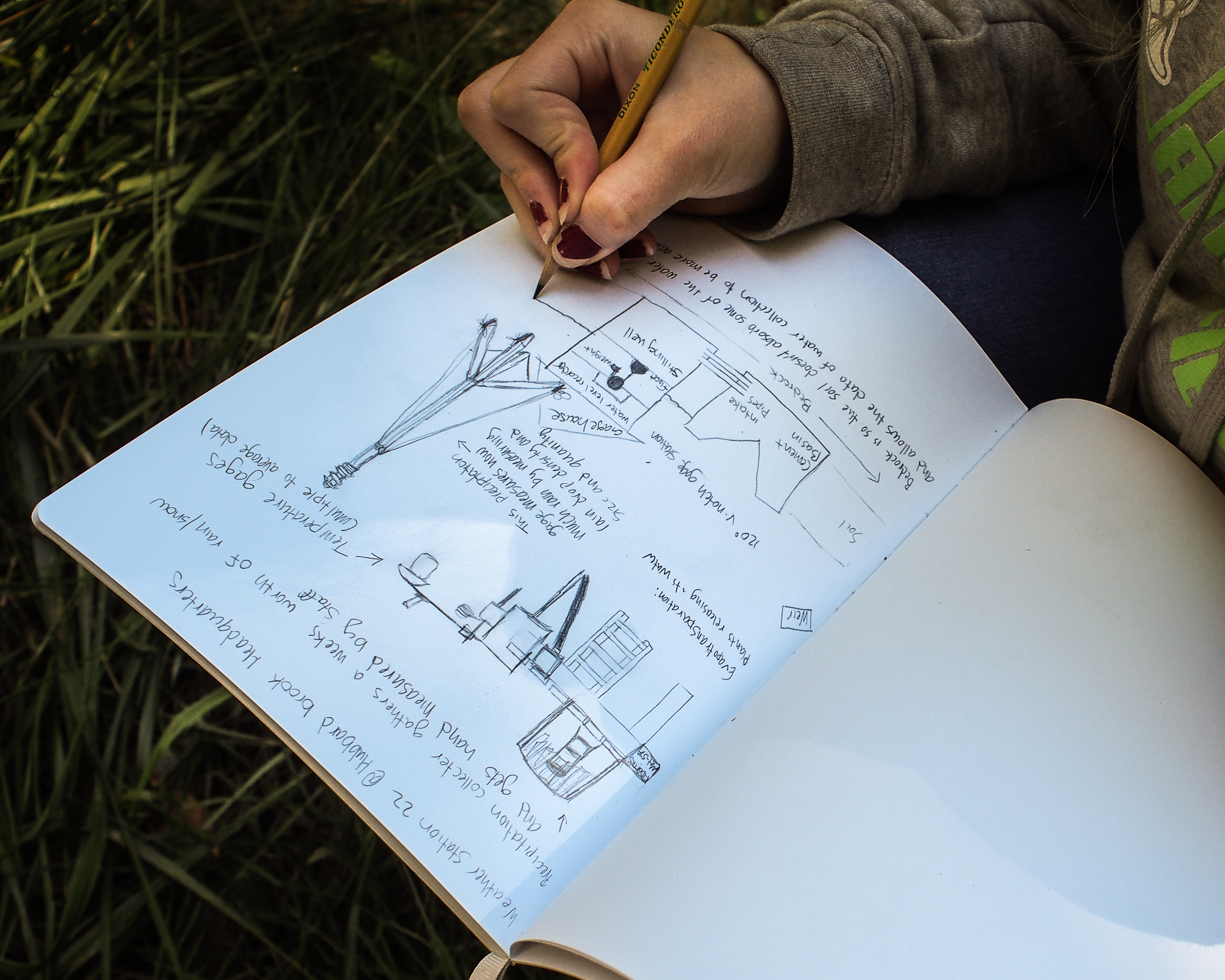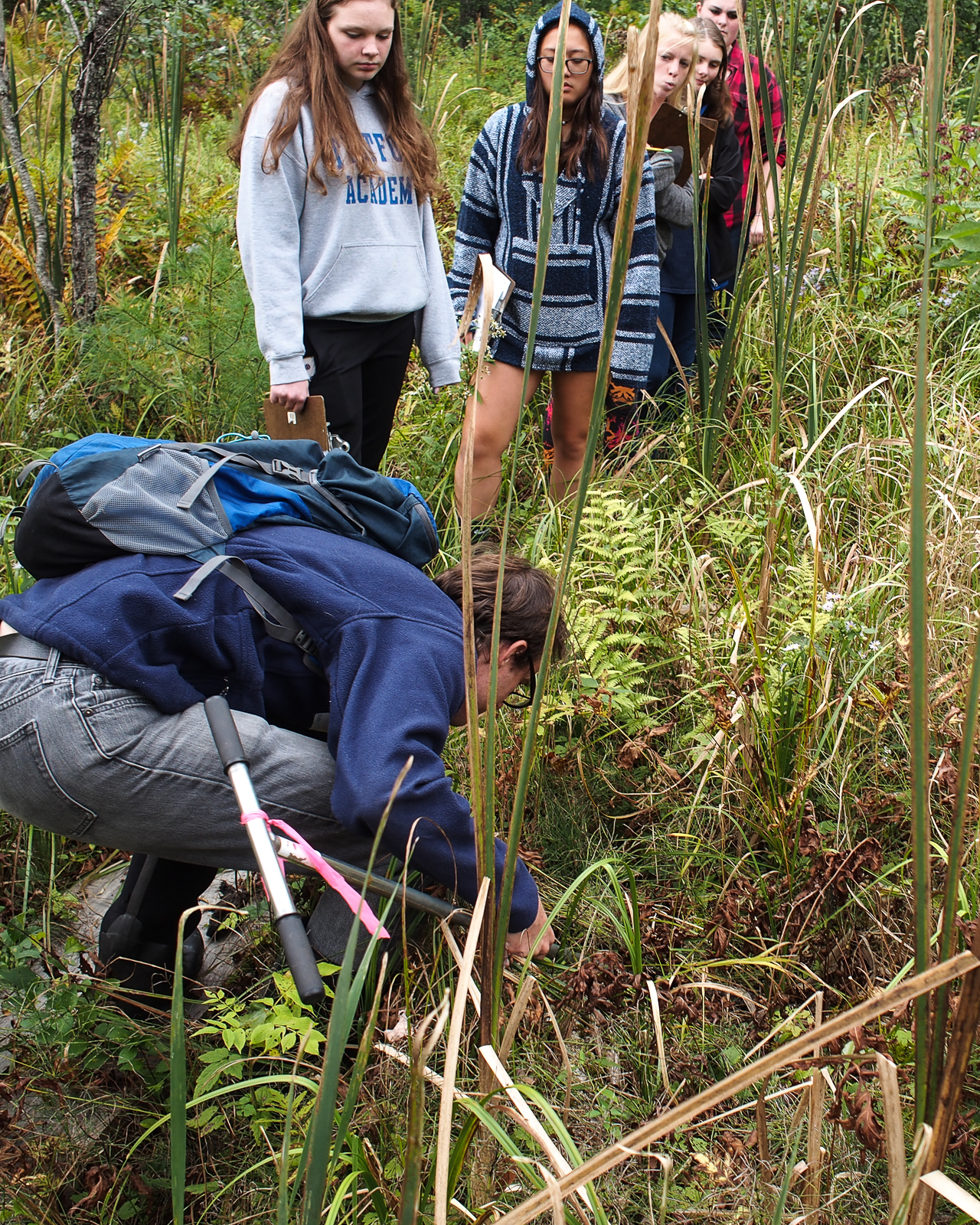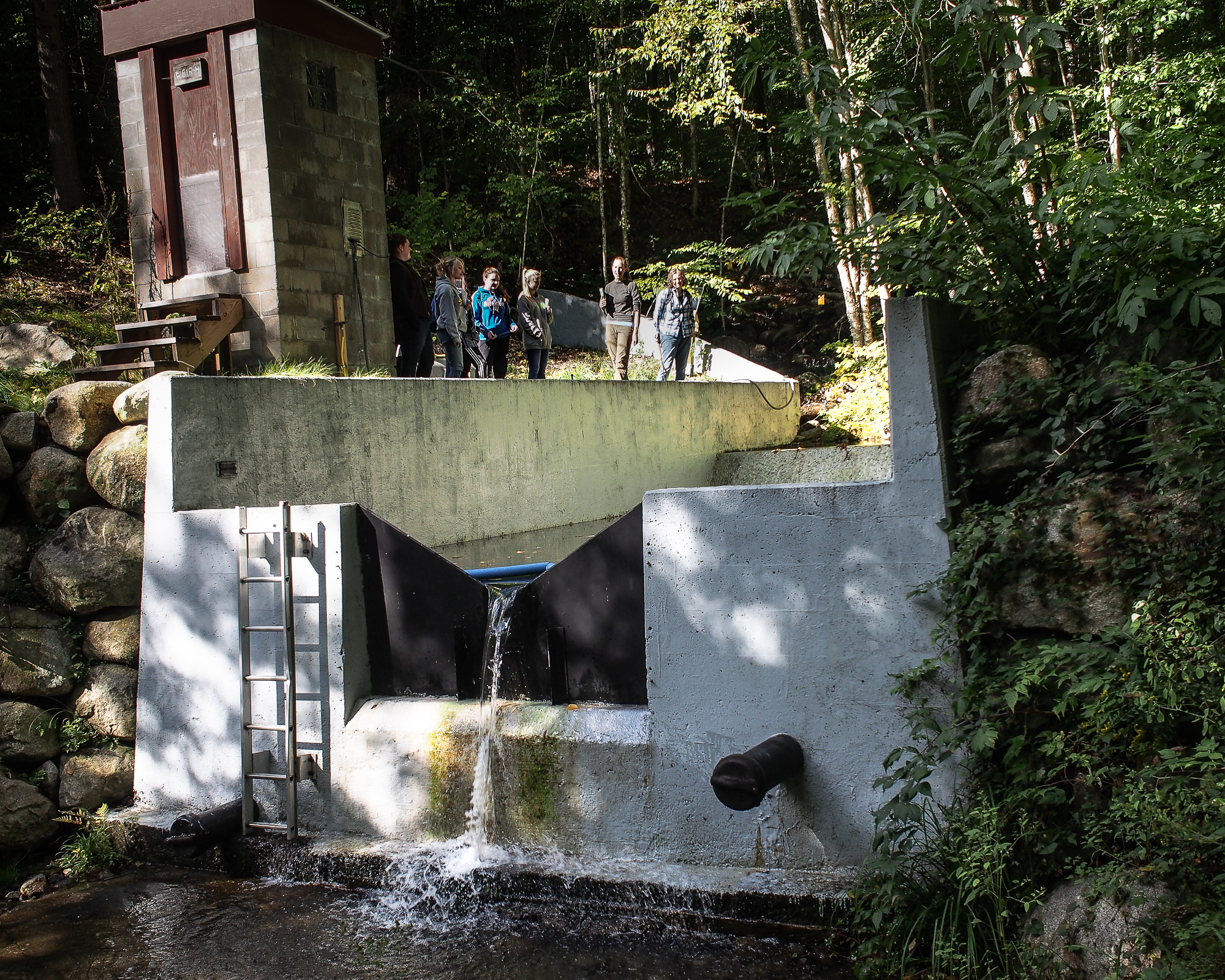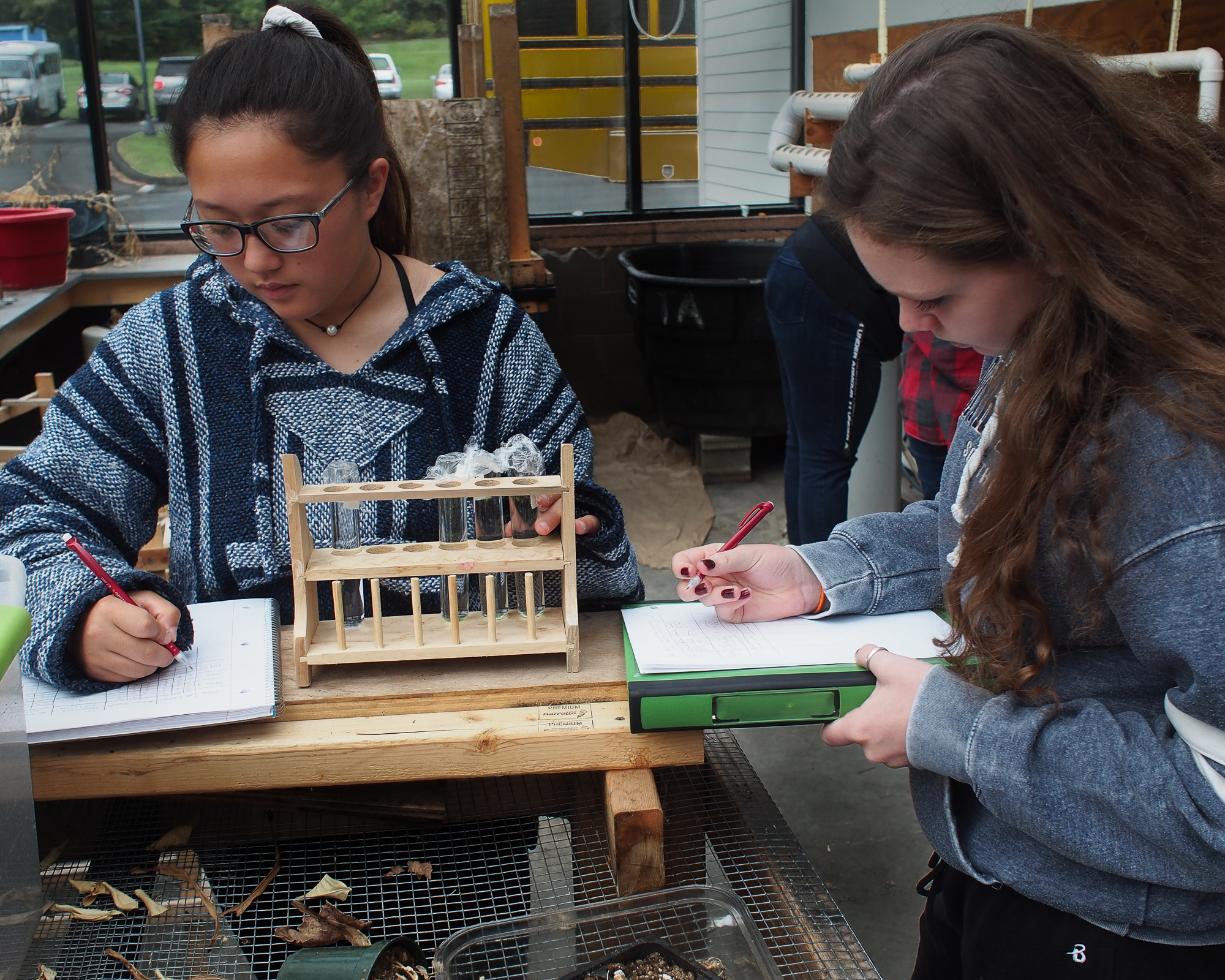Environmental Science in the Field
October 04, 2018

Recently, students in Mr. Engler’s Environmental Science class have been studying water quality and the cycling of nutrients (carbon, nitrogen, and phosphorous) throughout the ecosystem.
Their work has included a study of hydric soils at Zebedee Wetland with Charlie Hohn, a wetlands ecologist for the state of Vermont, as well as a field trip to the Hubbard Brook Experimental Forest in Woodstock, NH. Students explored water weirs, which are used to measure the volume of water that flows through the watershed (pictured). They also learned about phenological/seasonal changes that are monitored on an ongoing basis. The class reflected on their observations in their journals.
When they returned to TA, students continued their own study on the impact of varying concentrations of nutrients, and pH, on duckweed population size and viability.
Clockwise from top left: Exploring Zebedee with Charlie Hohn, Documenting weir design and meteorological equipment in a field journal, Weir # 5 at Hubbard Brook, Duckweed studies in the greenhouse.





